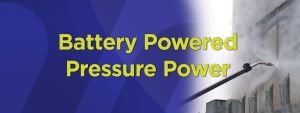A Comprehensive Guide to Choosing the Right PSI for Your Pressure Washer
When using a pressure washer, it is important to determine the appropriate PSI for your pressure washer before you start your machine. Pressure is quantified in pounds per square inch (PSI), with varying PSI requirements based on the cleaning task at hand. It is a unit of measurement used to quantify the amount of pressure exerted by a pressure washer’s water stream onto a surface. Essentially, it measures the force with which the water is expelled from the nozzle. Higher PSI means greater pressure and potentially more effective cleaning power, while lower PSI means less pressure. This guide, including a PSI chart, will help you select the right pressure for effective cleaning without causing damage.
How to Calculate PSI
PSI can be calculated by multiplying the bar value by 14.2. For example, a pressure washer with a bar rating of 10 bars has a PSI of 142 PSI.
Choosing the Right PSI
The PSI needed depends on the strength of the bond between the stain and the surface. A chart is provided below to assist in selecting the correct PSI, ensuring the pressure washer is powerful enough for the task without risking damage.
- 1000-1900 PSI: Suitable for home and vehicle cleaning tasks when using a handheld electric model.
- 2000 – 2900 PSI: Recommended for challenging and heavier residential cleaning tasks, compatible with both electric and gas models.
- 3000 – 6900 PSI: Designed for professional use, such as commercial and industrial tasks, and intended for gas models.
- 7000 – 50,000 PSI: Tailored for engineering and industrial applications involving larger equipment and structures, such as bridges and large buildings.
PSI Categories and Cleaning Tasks
Different PSI categories correspond to specific cleaning tasks. The chart below provides a clear overview of the recommended PSI for various applications. See chart on this page for design and explanation: https://cleanwatergear.com/pressure-washer-psi-chart/?utm_content=cmp-true
| Application | Light Duty 1500-1900 PSI | Medium Duty 2000-2800 PSI | Heavy Duty 2900-3200PSI | Extra Heavy Duty 3300PSI | Higher Multi-Duty 500-3000PSI |
| Gas + Electric Fences | X | X | X | X | |
| Cars/Trucks | X | X | |||
| Sidewalks | X | X | X | X | X |
| Patio Furniture | X | X | |||
| Industrial Equipment | X | ||||
| Stairs | X | X | X | X | X |
| Garage Floors | X | X | X | X | |
| Driveways | X | X | X | X | |
| Power Soaping | X | ||||
| Paint Prep | X | X | X | ||
| Siding | X | X | |||
| Stain Removal | X | X | X | ||
| Boat & ATVs | X | ||||
| BBQ Grills | X | X | X | X | X |
| Docks and Decks | X | X | X | X |
Water Flow Considerations
While water pressure is essential for breaking up dirt and stains, water volume, measured in Gallons Per Minute (GPM), plays a crucial role in efficient cleaning. Balancing pressure and water flow is key, considering the trade-offs between higher utility bills and water conservation. The GPM is as significant as PSI when selecting a pressure washer.
Task-Specific PSI Recommendations
The chart below outlines the required PSI for common cleaning projects, categorizing them into light duty, medium duty, heavy duty, extra heavy duty, and multi-duty tasks. This aids in choosing a pressure washer tailored to the specific cleaning requirements.

The Bottom Line
Investing in a pressure washer requires careful consideration to avoid wasting money and time on a machine with the wrong pressure. More power does not always equate to better performance if it exceeds the tasks at hand. The best pressure washer is one with the right PSI and GPM for the intended jobs. Understanding the relationship between PSI and cleaning tasks ensures that the selected pressure washer meets the specific needs without unnecessary expenditure.





